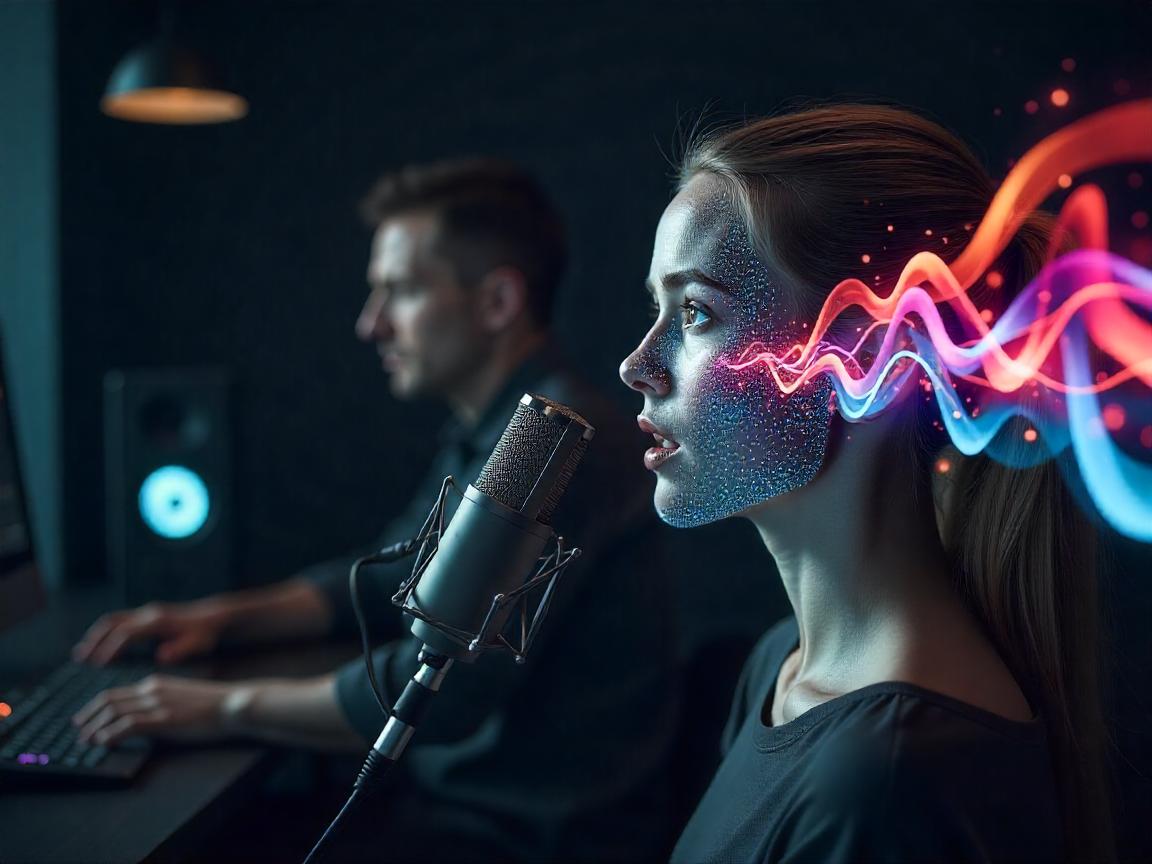
Beyond the Robotic Voice: The Dawn of Emotionally Rich AI Speech
Honestly speaking, most of us can immediately identify a bland, unnatural beat of older text-to-speech engines. They had the voicing of a GPS and fax machine combined. However, this notion has been flipped upside down last year. With the aid of the innovations in diffusion-based neural networks and huge training sets of multi-emotion voices, generative audio twins can now be produced to a degree of emotional realism that is beyond belief. DeepMind reported in its April 2025 report that, more than 83 percent of listeners could not identify the differences between synthetic speech and actual recordings when running blind, a statistic that shocked both linguists and machine learning practitioners. In my own case, the first AI story I heard read me a bedtime story with such a vaguely sad sweetness, I felt unnerved, how readily might this degenerate into a lie?
The Science Behind Emotional Synthesis
Then, what really happened so that such a development is possible? It lies in a sum of three major innovations:
- Emotion conditioning vectors: It can now be used to program models with implicit indicators that trigger sadness, joy or curiosity within the milliseconds.
- Cross cultural emotional corpora training: Firms such as ElevenLabs and ReplicaSound have licensed vast databases of professional voice actors reading in dozens of languages with different moods.
- Self-supervised prosody learning: This enables AI to not only replicate words, but also the exact musical endowment of human speech.
In some respects, it is as though the traditional lines between code and feeling are getting washed away. Recently, VALL-E 2 was profiled by MIT Technology Review: it produces emotionally expressive voice tracks that can be made convincing to such an extent that audiobook publishers have already begun pilot programs to substitute aspects of their human voiceover pipeline. This is no longer something new in the future, it is ready to be produced and transform the creative industries.
Real-World Applications and Use Cases
Generative audio twin applications are expanding at a rate that most individuals are unaware of. So, what about a couple of examples out in the world:
- Dynamic intonation: Context-adapted intonation can now be achieved by text-to-speech apps for the visually impaired, such as a dynamic intonation when it is crucial to read the news or to languish at the times of reading literature.
- Mental health: AI companions use uplifting, relaxing voices to guide their patients through their anxieties. AI companions are not only being tested in startups but also in shelters, schools, and companies providing care in a mental state.
- Entertainment: Indie giants are swapping costly recording studios with AI actors who can alter their working skills when needed.
In January this year, A SoundCraft AI-based New York company said that its beta customers saved more than 70 percent in voiceover spending in the first quarter of 2025 alone. I interviewed a game developer and they explained that their software had to reinvent their whole dialogue around AI narrators so they could have fully dynamic scripts without the budget going through the roof.
The Murky Ethics of Emotional Voice Cloning
As fast as these developments are happening, the legal and ethical stakes have gone sky high. Who possesses emotional resemblance of a voice? Is it possible to withdraw consent after the training of a model? In February, voice actresses launched an action against a giant audiobook trading company claiming that their voice performance was unauthorizedly used to train AI models. This case might become a precedent on the global scale.
But what is more disturbing is that there is possibility of fraud. Consider being called by someone that sounds like your spouse and asking you to send some cash immediately. Scammers already use deepfake video to commit their crimes and realistic audio could boost frauds. Dr. The researcher in AI ethics Emilia Rojas recently cautioned against the fact that the “emotional authenticity can no longer serve as the human signature.” I was shuddering after reading that. We are moving into a world where even a raw emotion is artificial.
Where We Go From Here
One would like to hail such progress as positive only. And, in most aspects, they are: richer accessibility tools, a new way of art, and personalized experiences. No past generations would ever dare to dream of these. Yet there is also a paranoia of existential angst. But can we take that at face value? Question is, does it degrade the value of human to human connection? We pretended to sound like humans ourselves and feeling like we are humans when we are not.
Speaking personally, I think it is going to require sound consent and watermarking. Clear disclosure standards must also be in place before these tools can run wild. Otherwise, it will confuse the boundaries between the reality and the simulation to the bottoms that we cannot still accept. Generative audio twins are a wonder of contemporary engineering. But we must never lose sight of the fact that they are also a mirror. They reveal our most profound desires and concerns. These relate to what it means to appear and feel human in terms of sound.